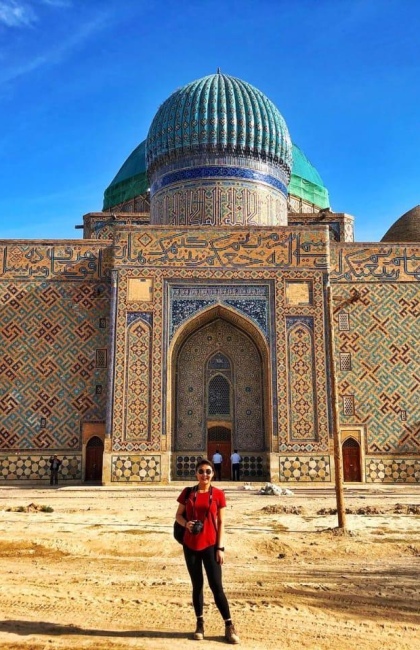The Ancient City of Saraishyq
A City at the Crossroads
North of Atyrau, on the banks of the Ural River, lie the ruins of one of Kazakhstan’s most significant medieval cities – Saraishyq (also known as Saray-Jük). It was founded in the 13th century, during the era of the Golden Horde. Its strategic position on the Silk Road turned it into a major hub connecting Khwarazm, the Caucasus, and Russia. Caravans loaded with silk, spices, metals, and horses stopped here, filling its streets with the sounds and aromas of a bustling market. The city was relatively advanced for its time. Archaeologists have uncovered remains of a water supply and sewage system made of ceramic pipes, workshops of potters and metalworkers, and mudbrick houses with wooden ceilings. Residents cultivated crops, grew melons, fished in the Ural, and practiced various crafts.
Saraishyq’s people were also known for their literacy, a rare trait in the region during that period. Inscriptions found on ceramics, bronze objects, and fragments of paper testify to a culture that valued knowledge.
Capital and Resting Place of Khans
Between the 14th and 16th centuries, Saraishyq became a political hub and, for a time, the capital of the Kazakh Khanate. It was home to the khan’s palace and a mausoleum where, according to legend, seven Kazakh khans were laid to rest.
Destruction and Renewal
In 1395, the city was destroyed by the forces of Tamerlane but was rebuilt a few decades later, in the 1430s-1440s. By the late 15th century, it had become the capital of the Nogai Horde. Saraishyq’s final tragedy came in 1580 when it was razed by the Don and Volga Cossacks. Life here never returned to its former glory. Later, in 1640, Russian settlers founded the Saraishyq Fortress two kilometers upstream from the ruins, marking the beginning of a new settlement. Over time, it evolved into the village of Stary Saraishyq, which still exists.
Saraishyq Today
Today, the site of the ancient city is home to the Saraishyq Historical and Cultural Museum-Reserve. Visitors can explore reconstructions of the khan’s residence, view archaeological artifacts such as pottery, jewelry, and weapons, and learn about the city’s remarkable past. Each summer, the area hosts cultural events and ethnographic festivals that revive the spirit of the Silk Road.
How to Get There?
Saraishyq is located 55 km (34 mi) north of Atyrau, on the banks of the Ural River. To reach it, take the A-28 highway (Atyrau-Uralsk road) north from Atyrau. The journey takes about an hour by car.
Other tourist attractions near Saraishyq:
- Lotus Valley at the Mouth of the Kigach River
- Lake Inder
- Caspian Sea
- Besshoky Hill
- Akkegershin Plateau

_420x650_4ab.jpg)
